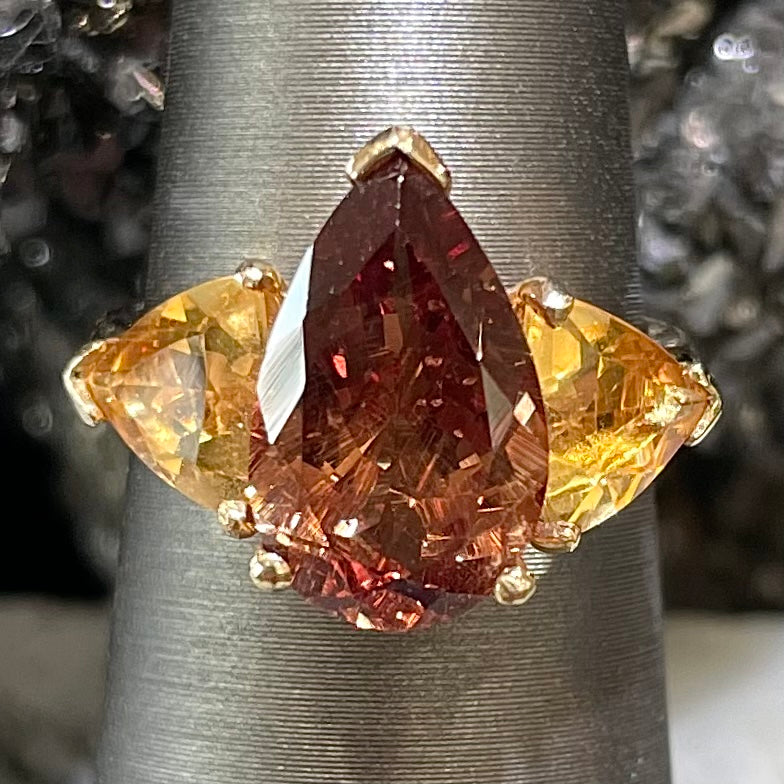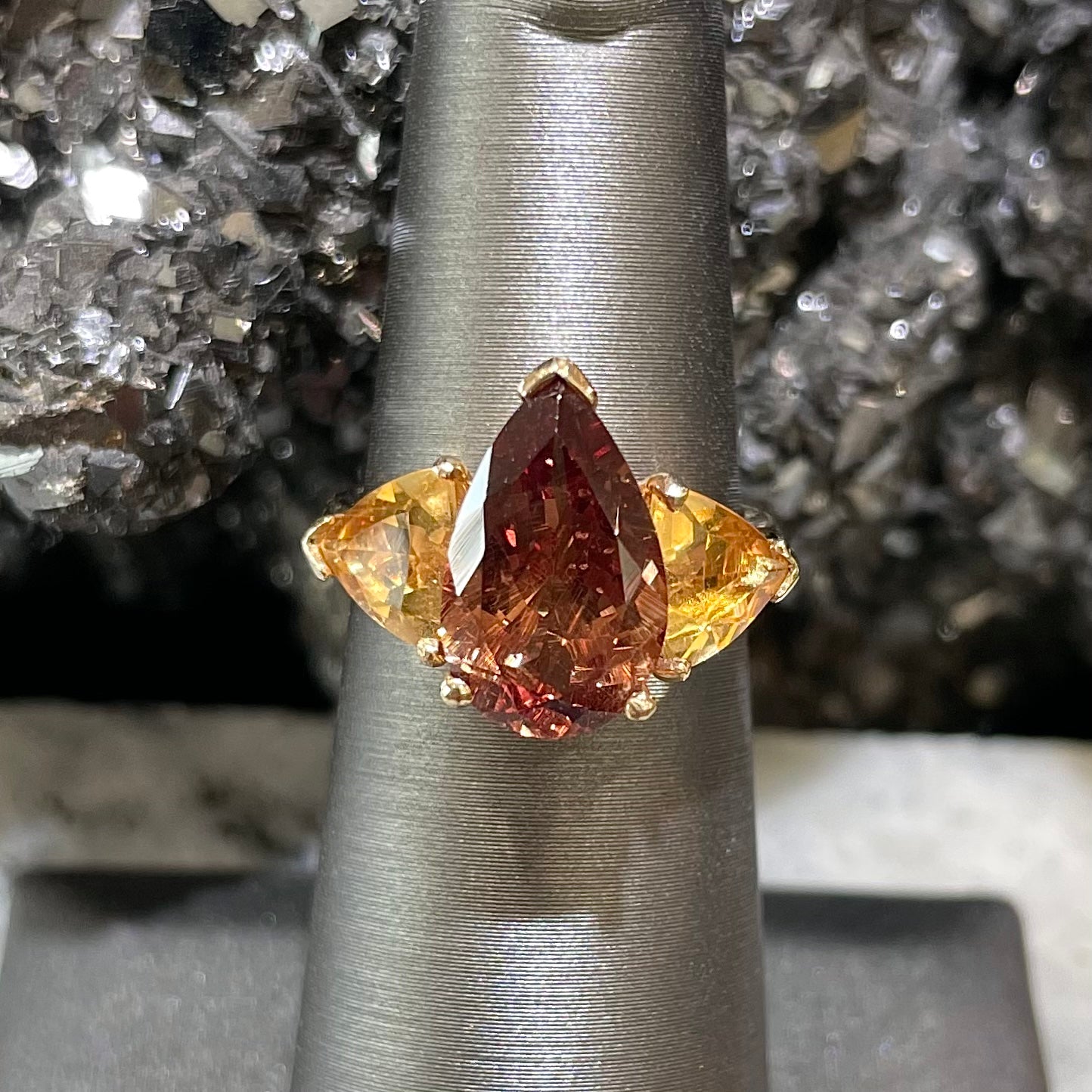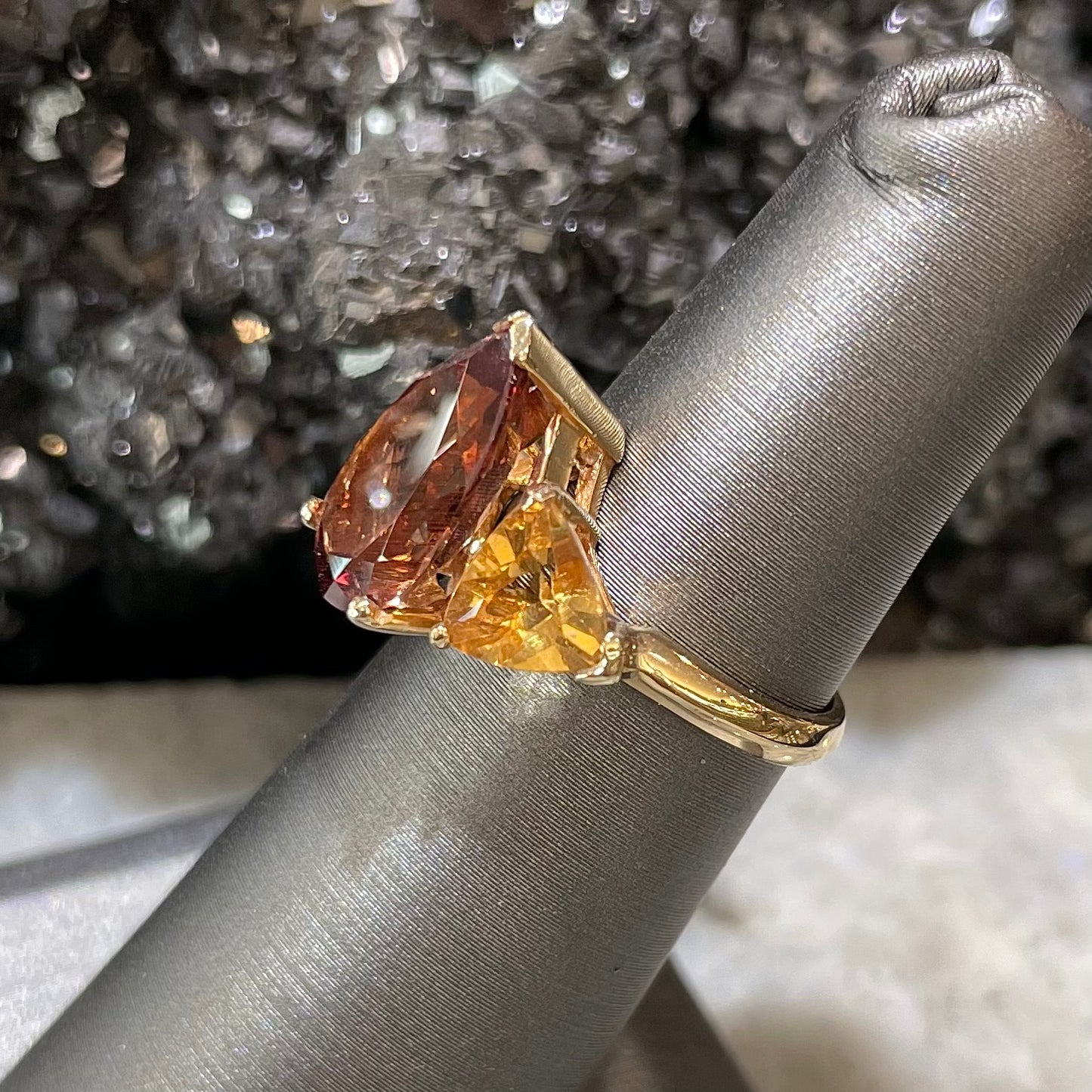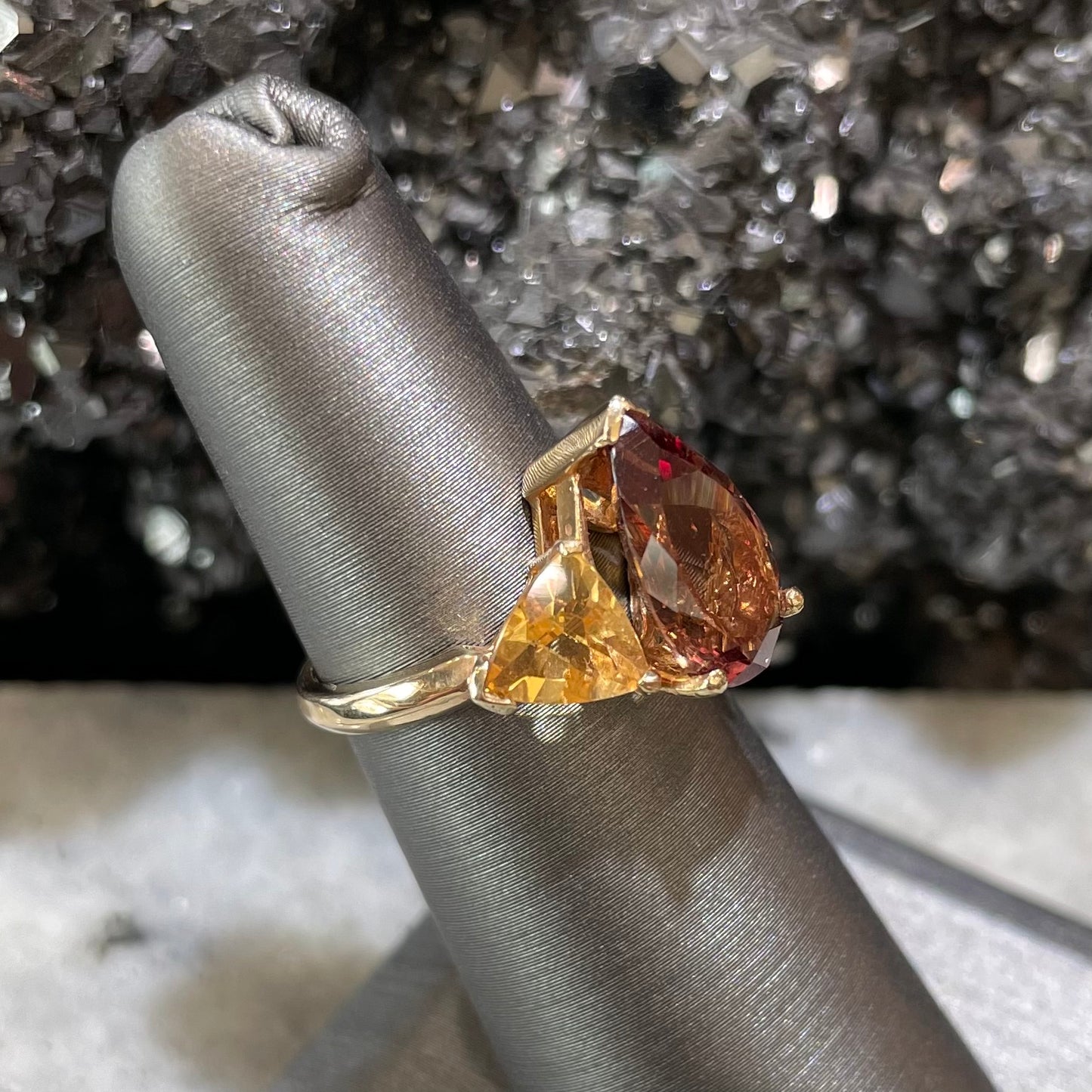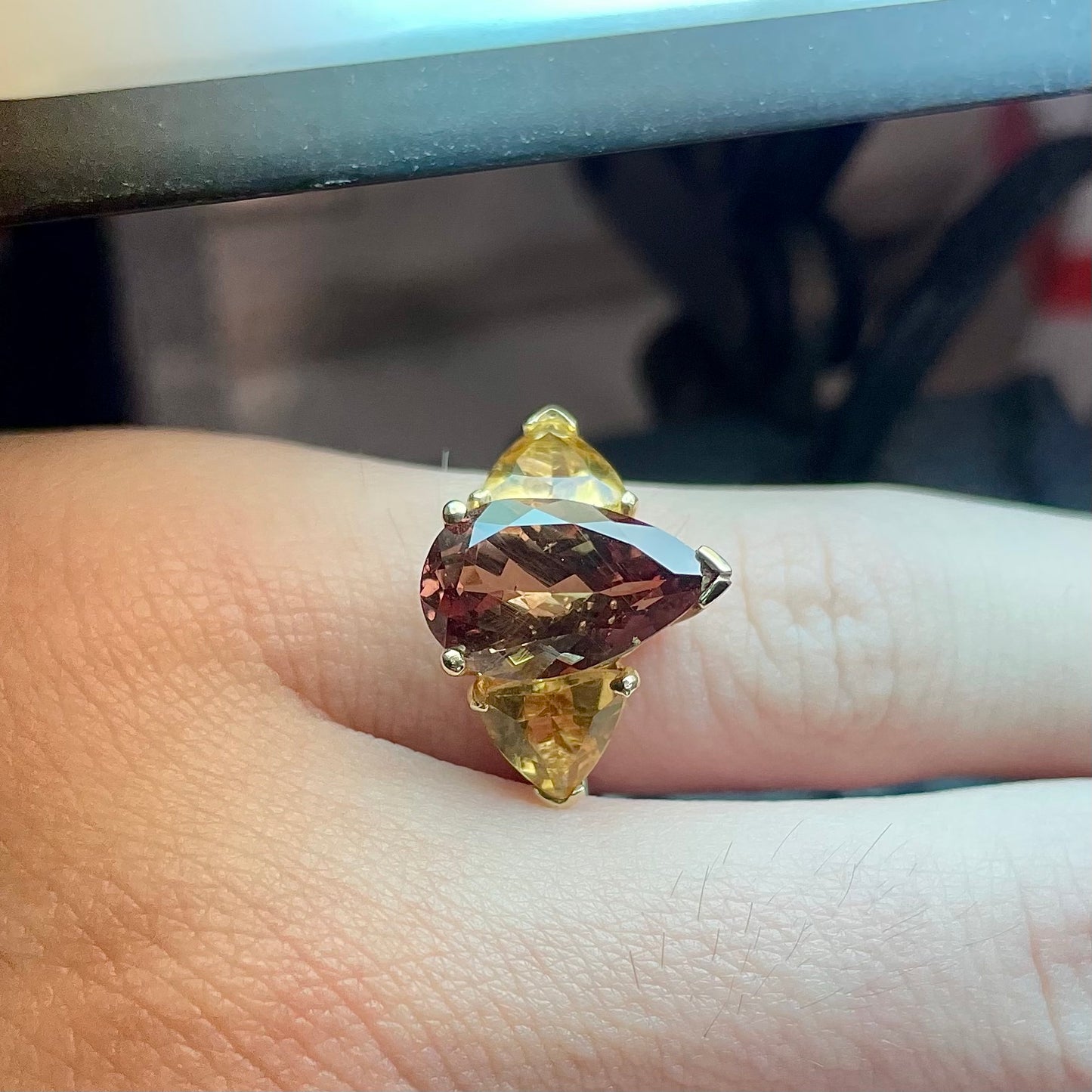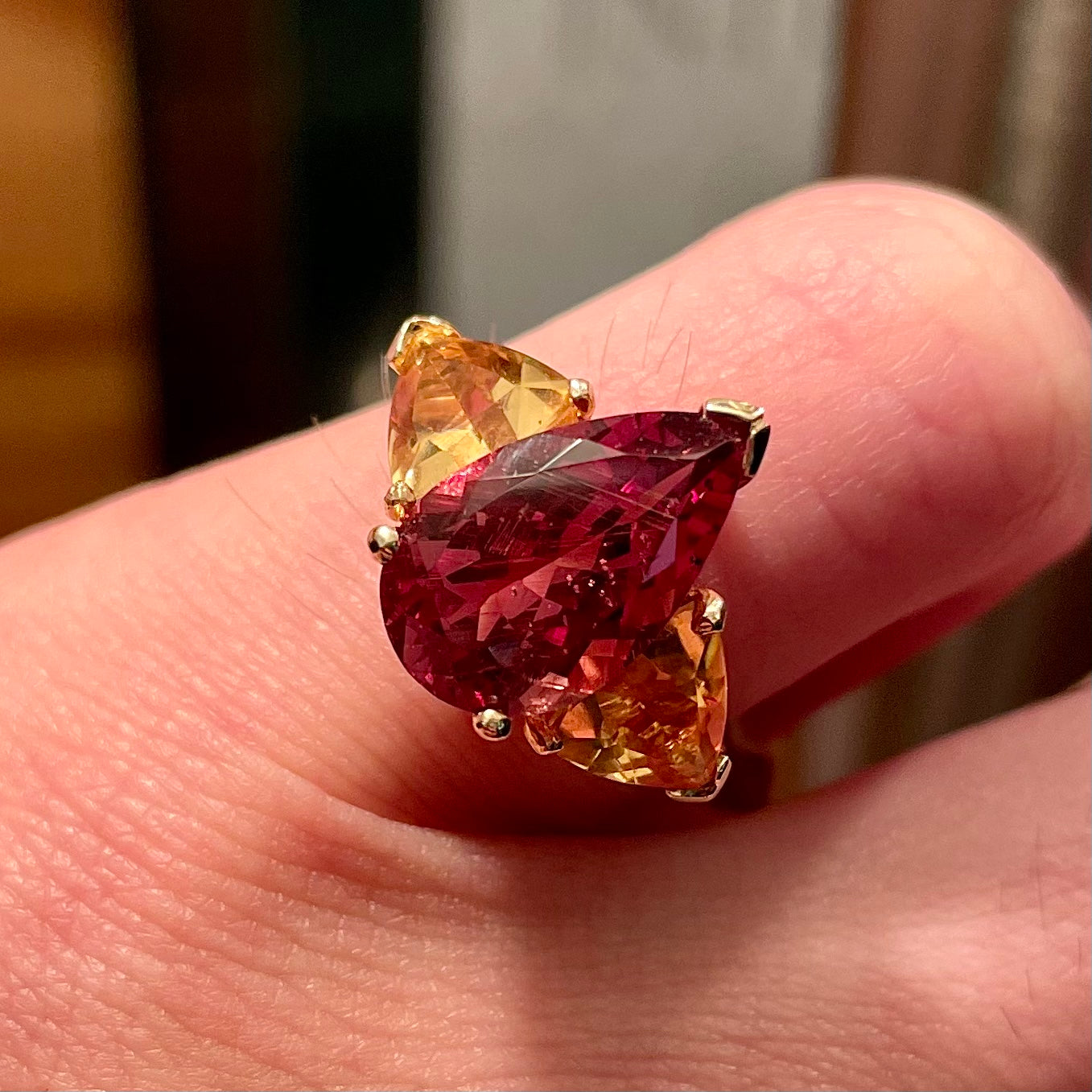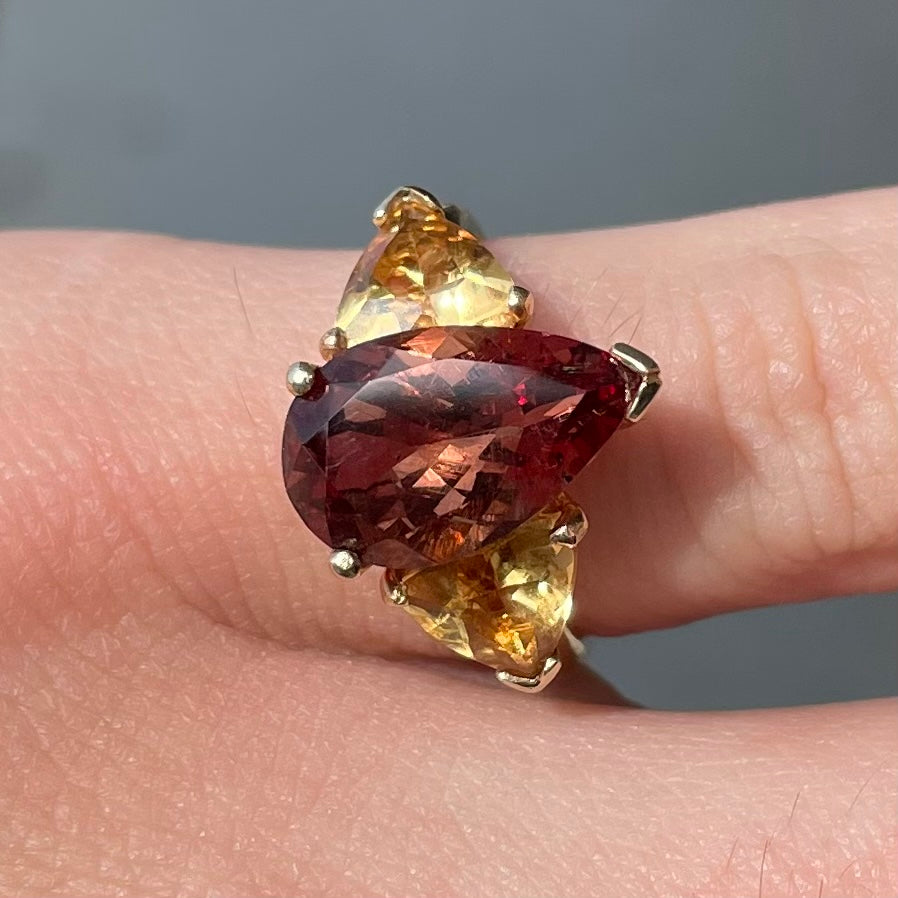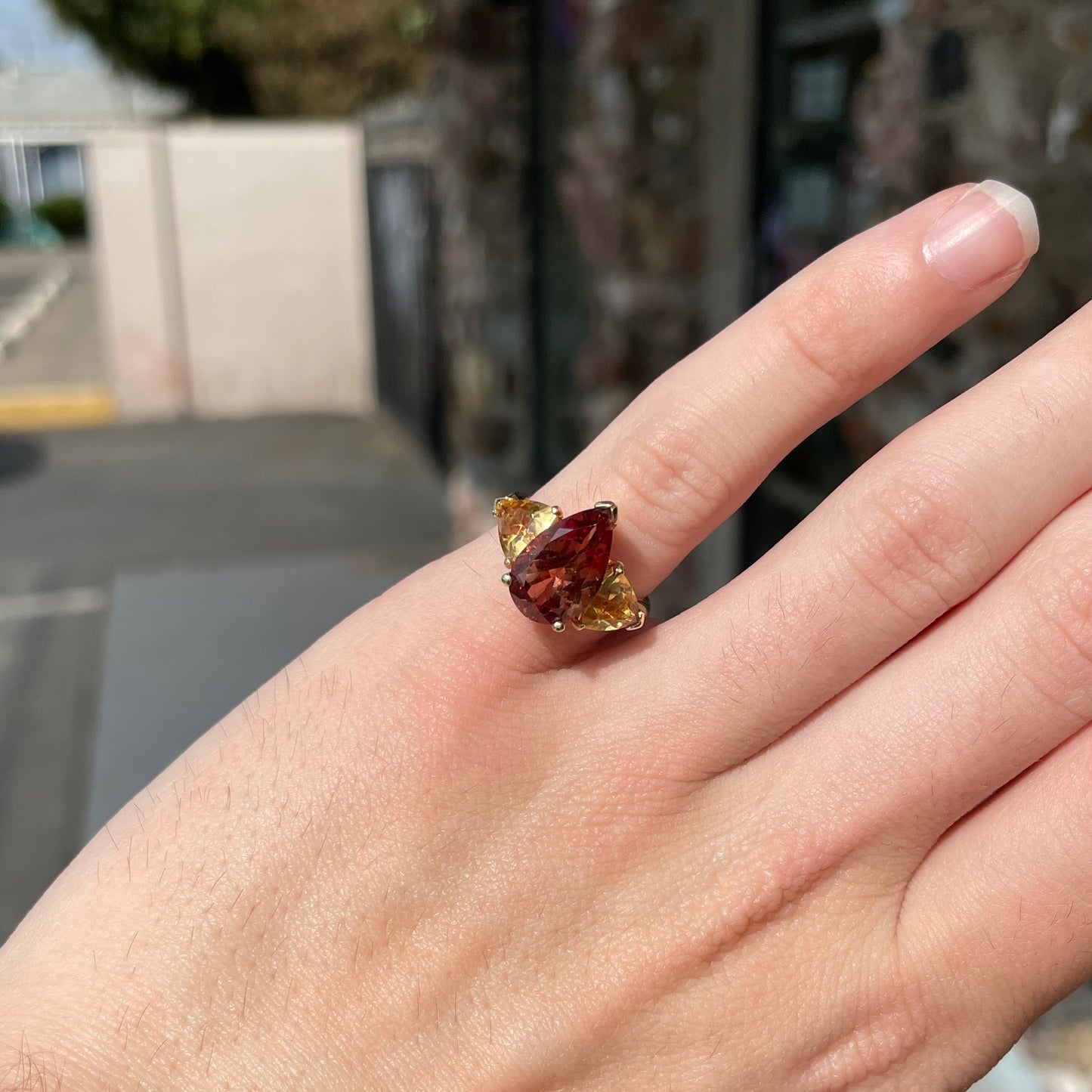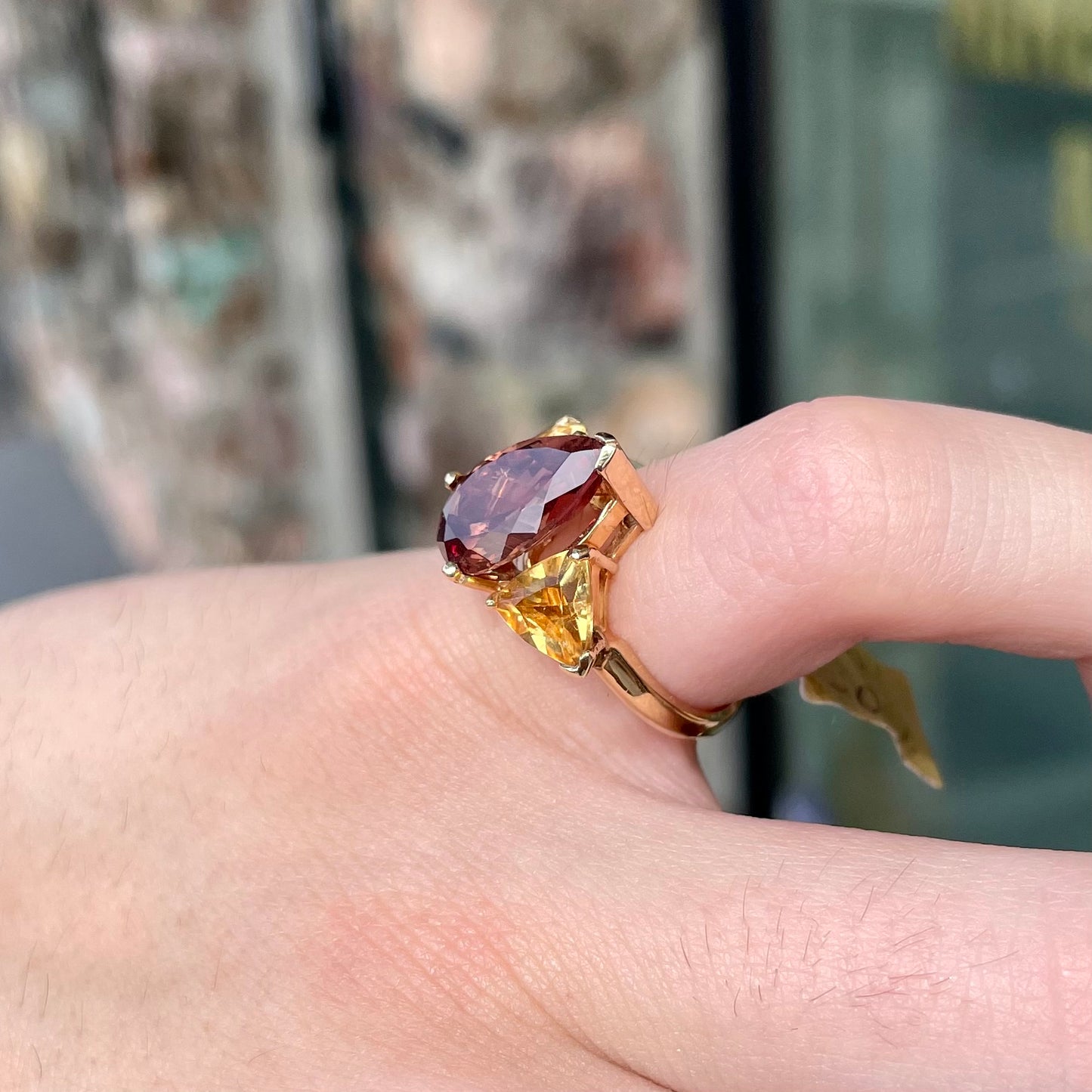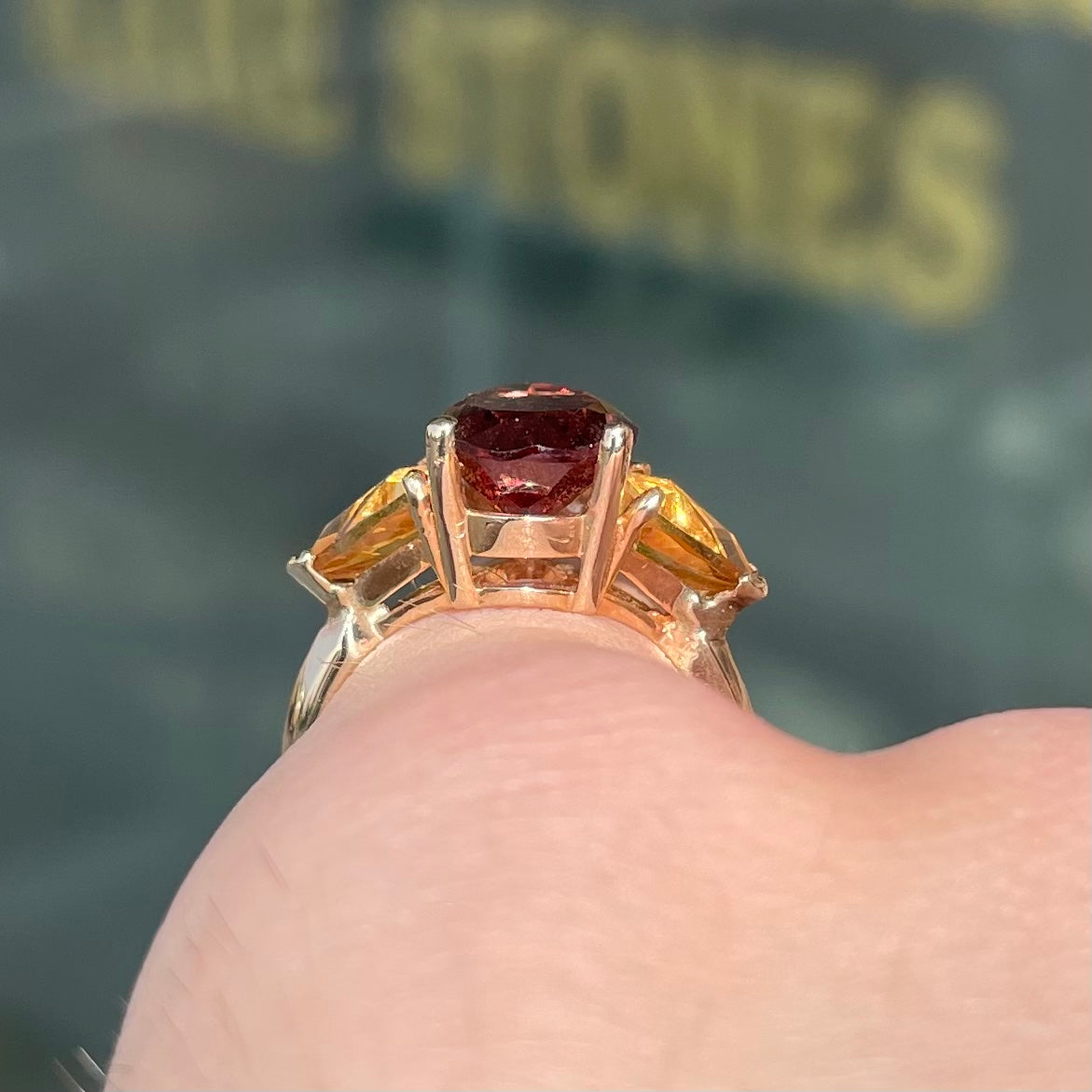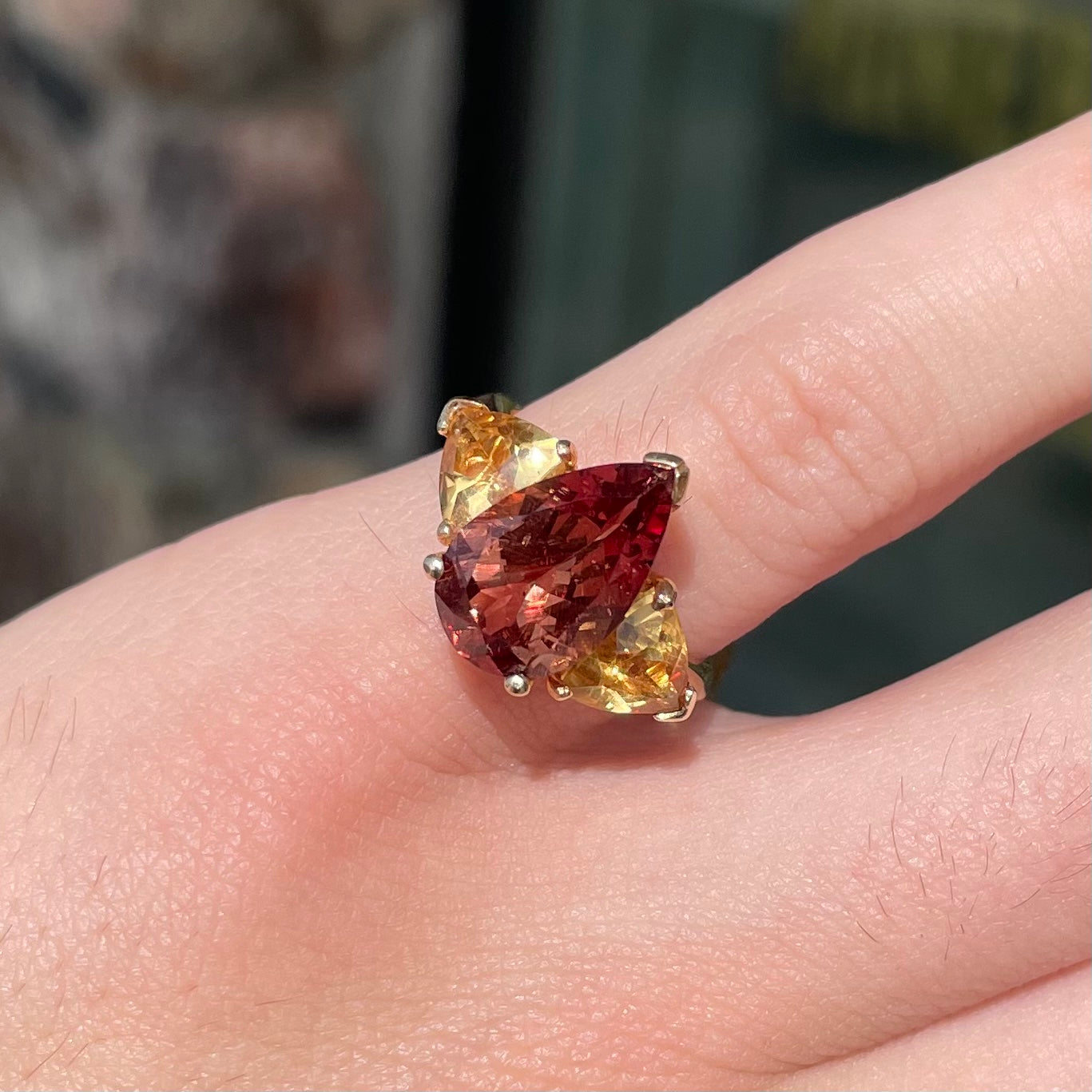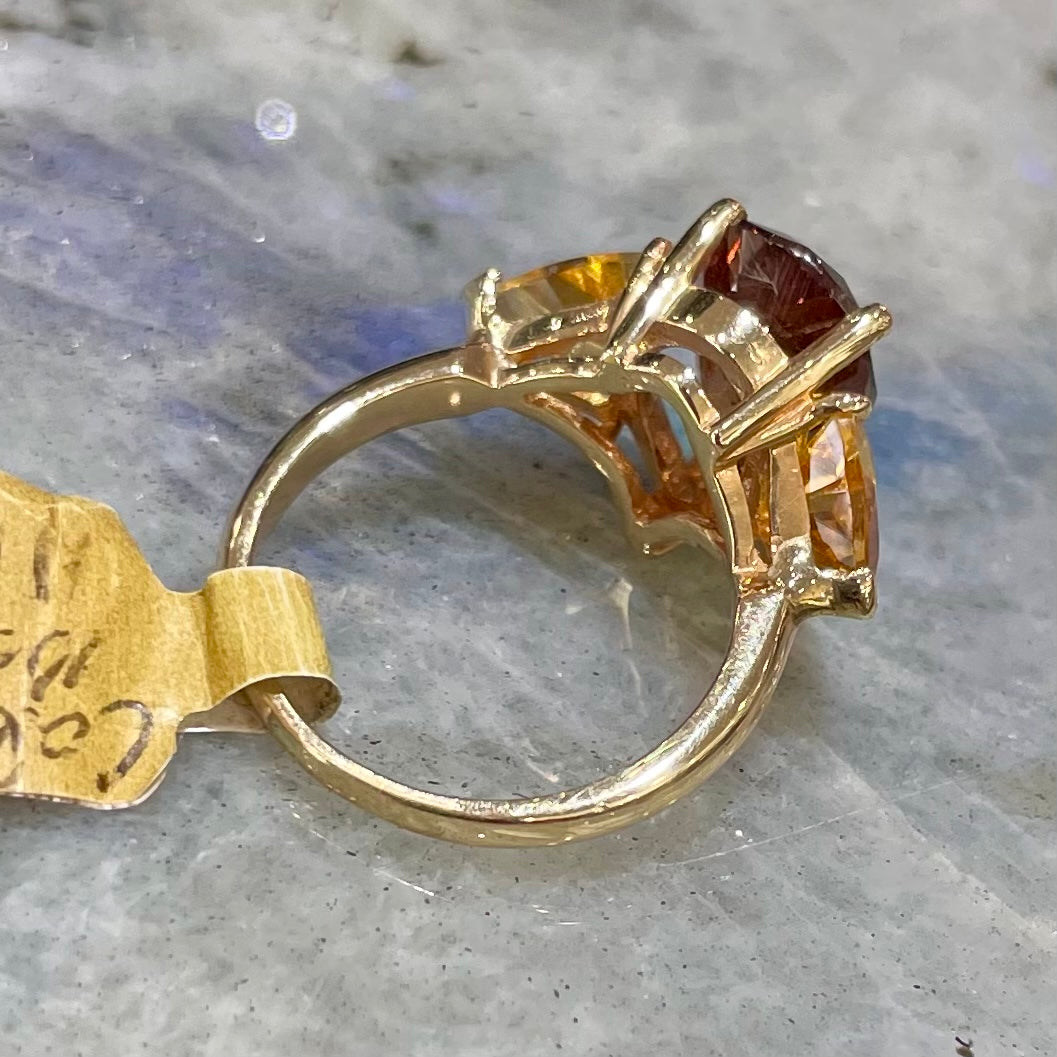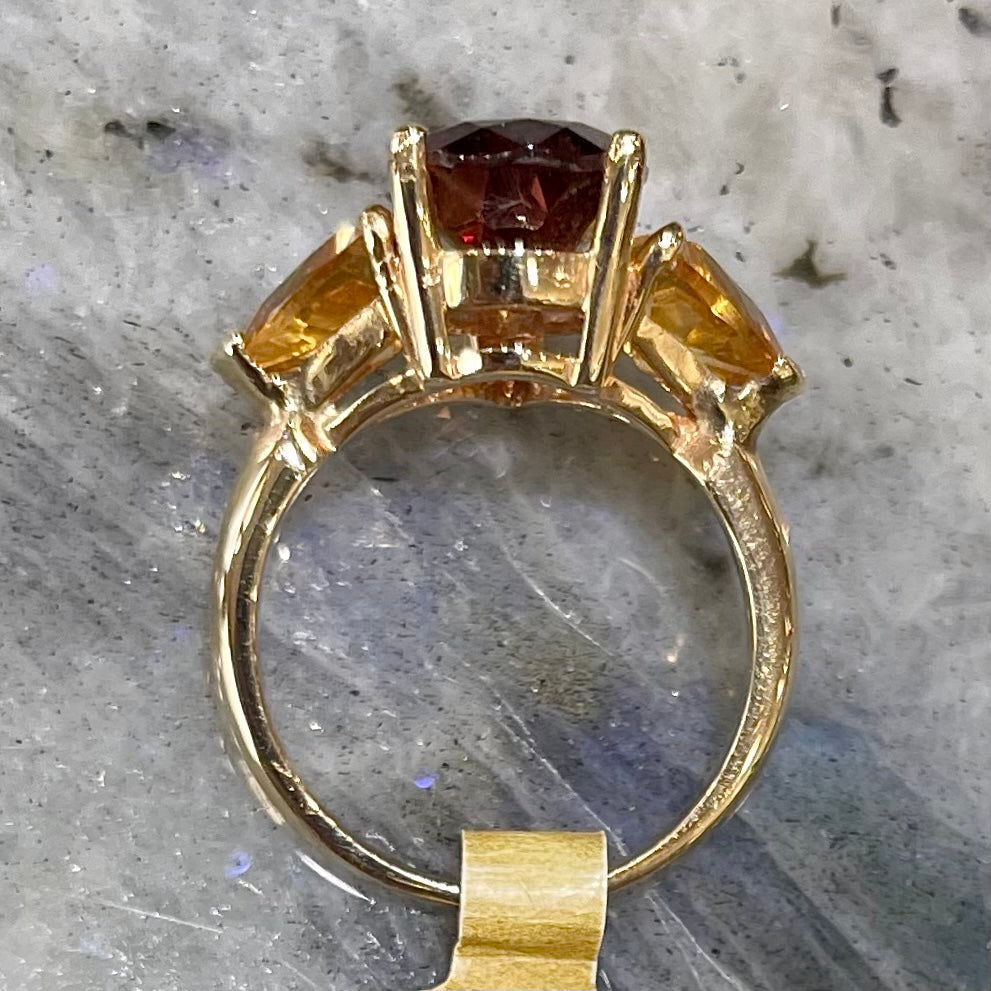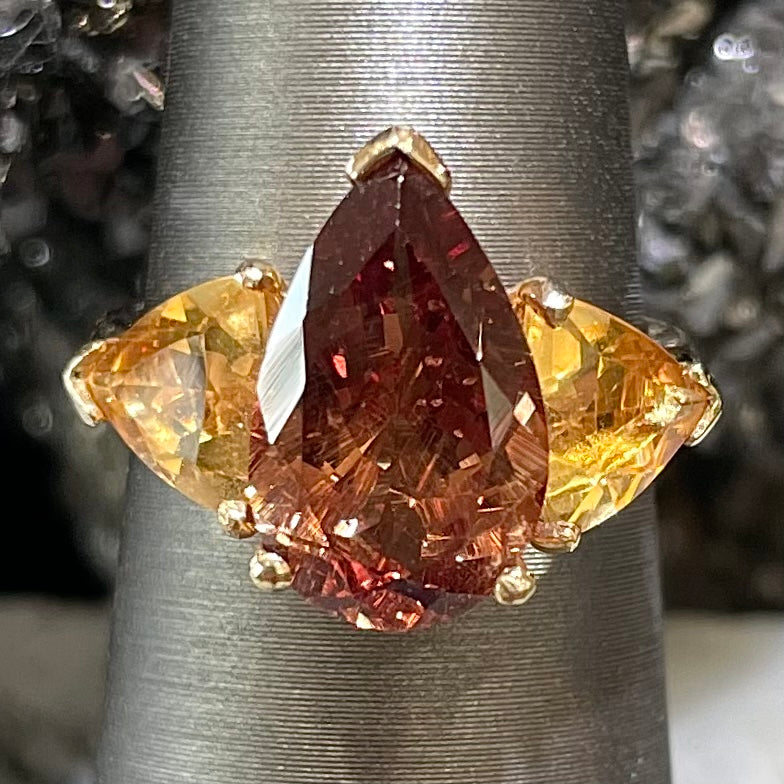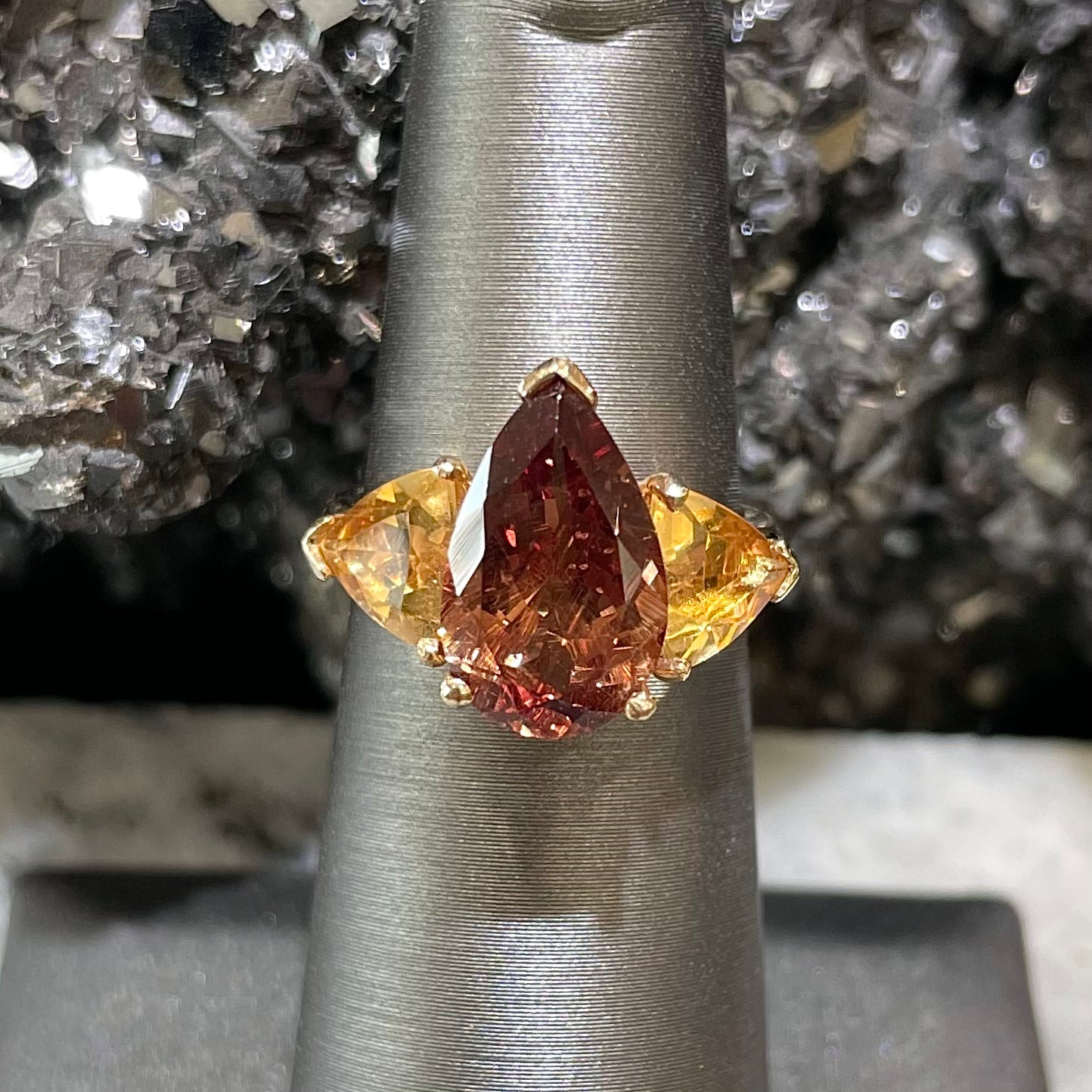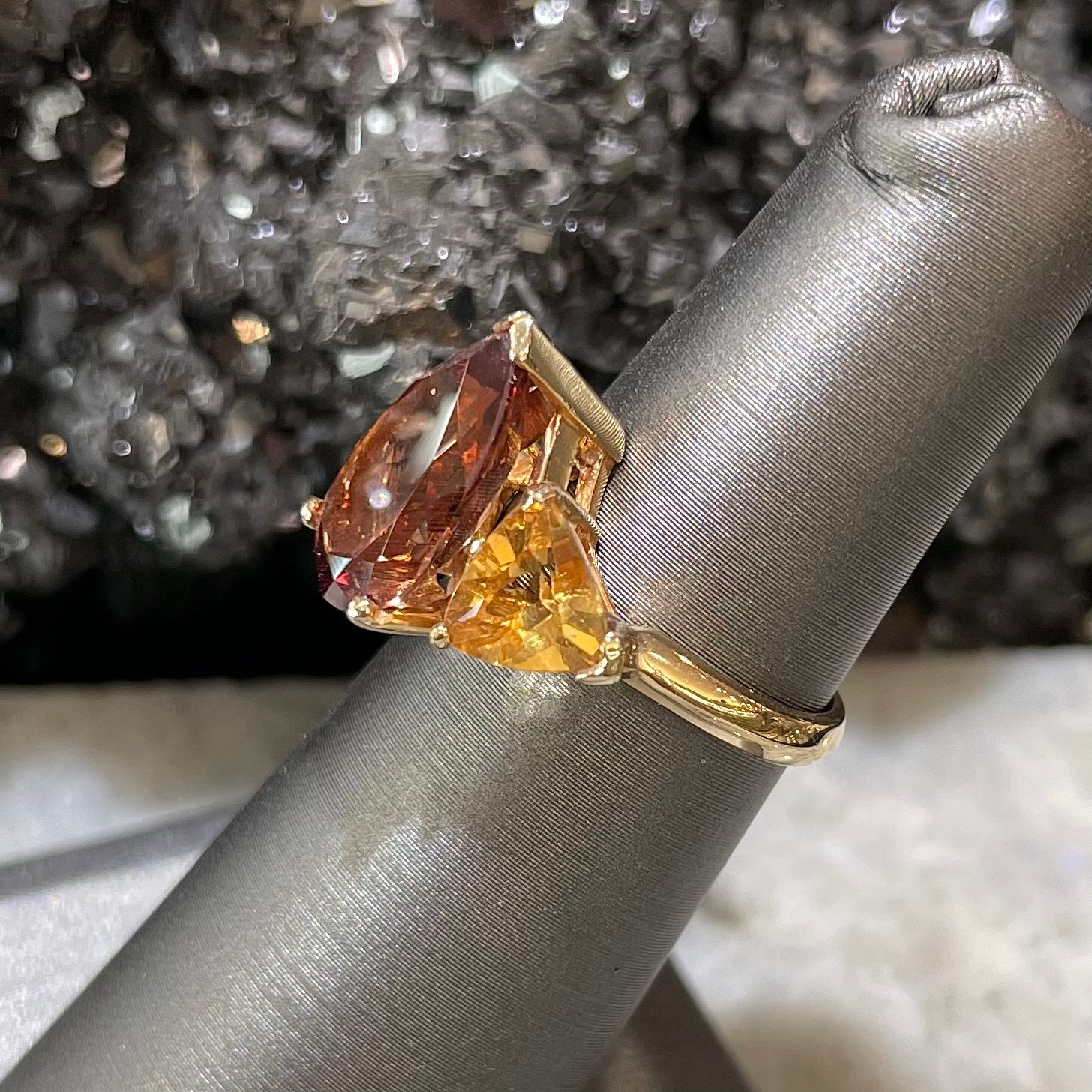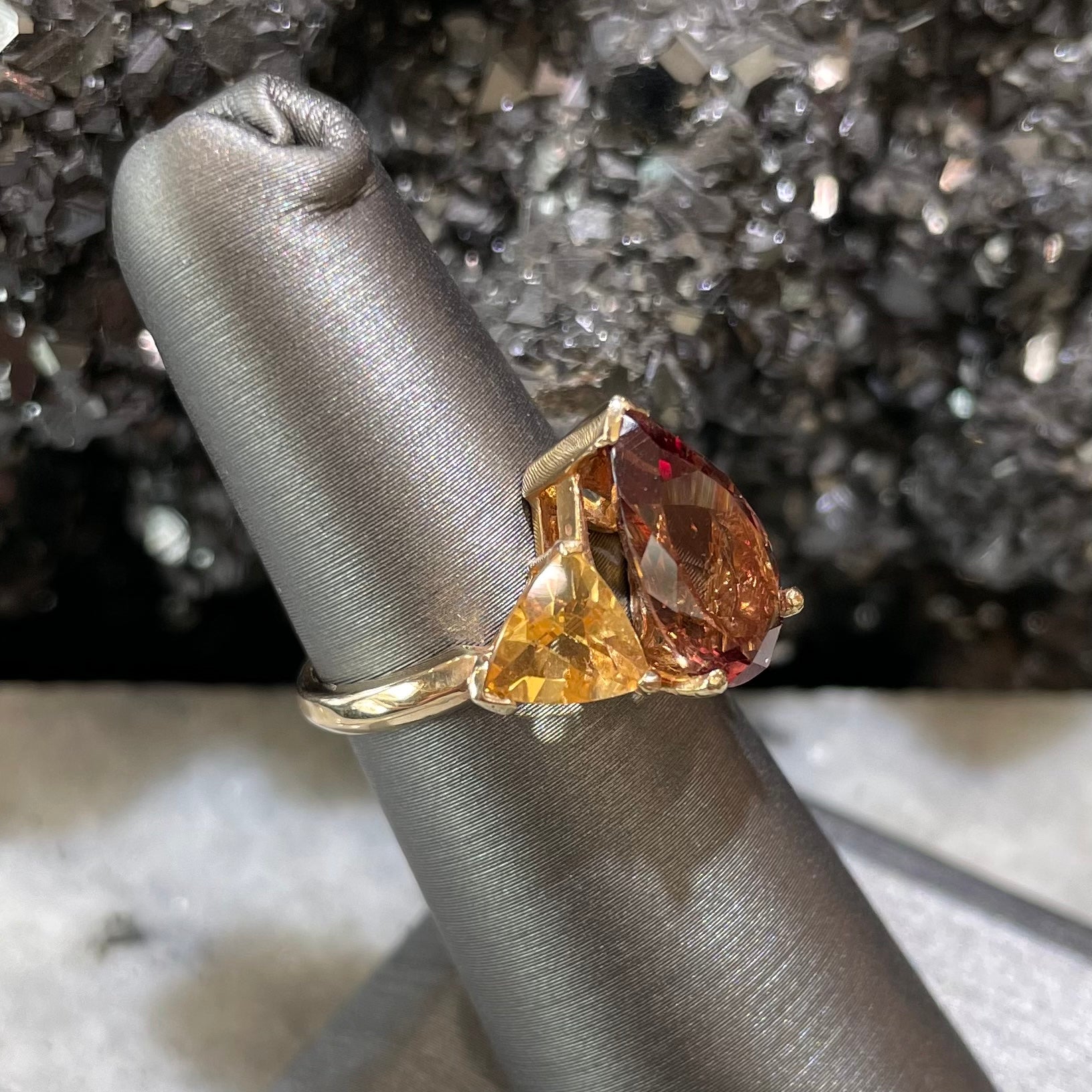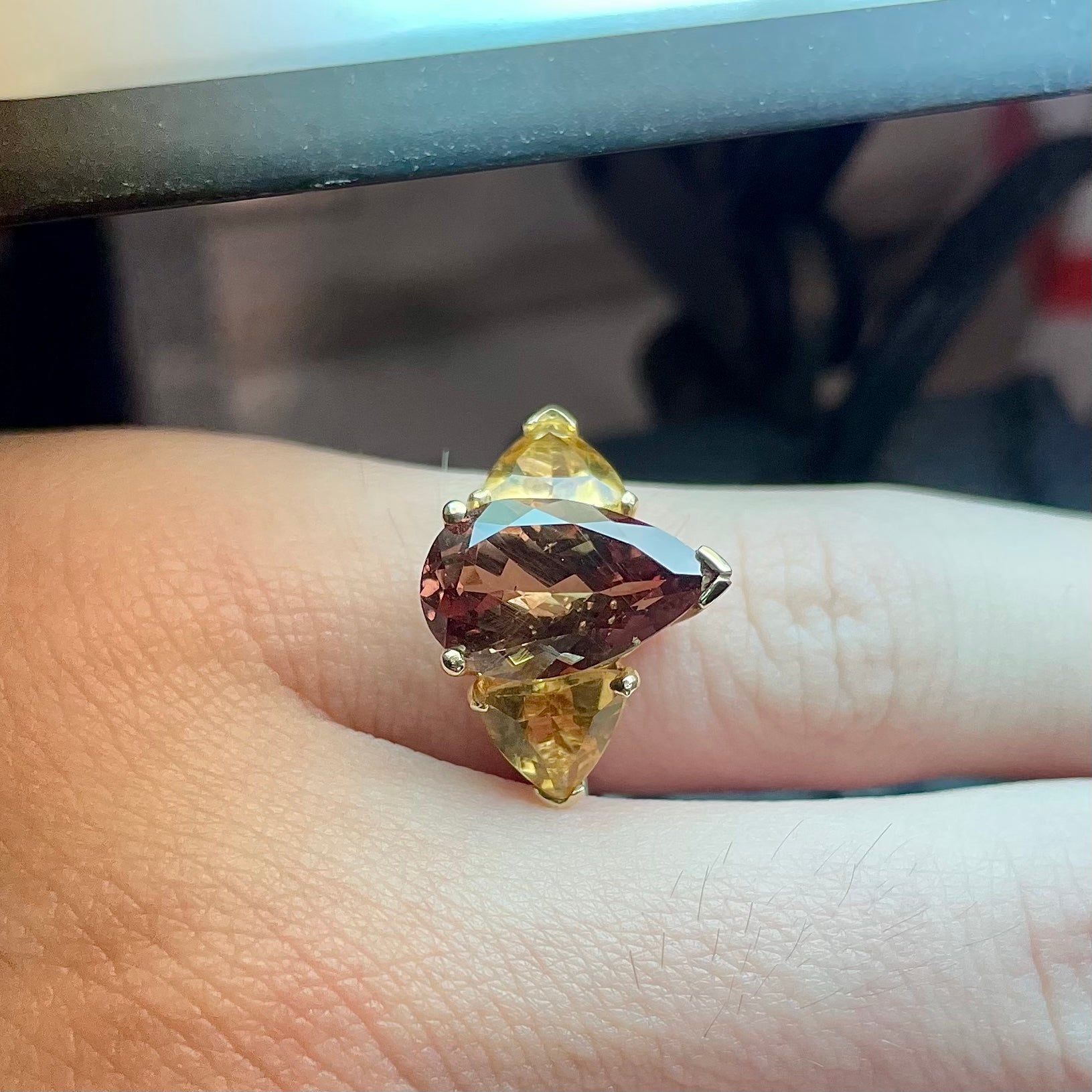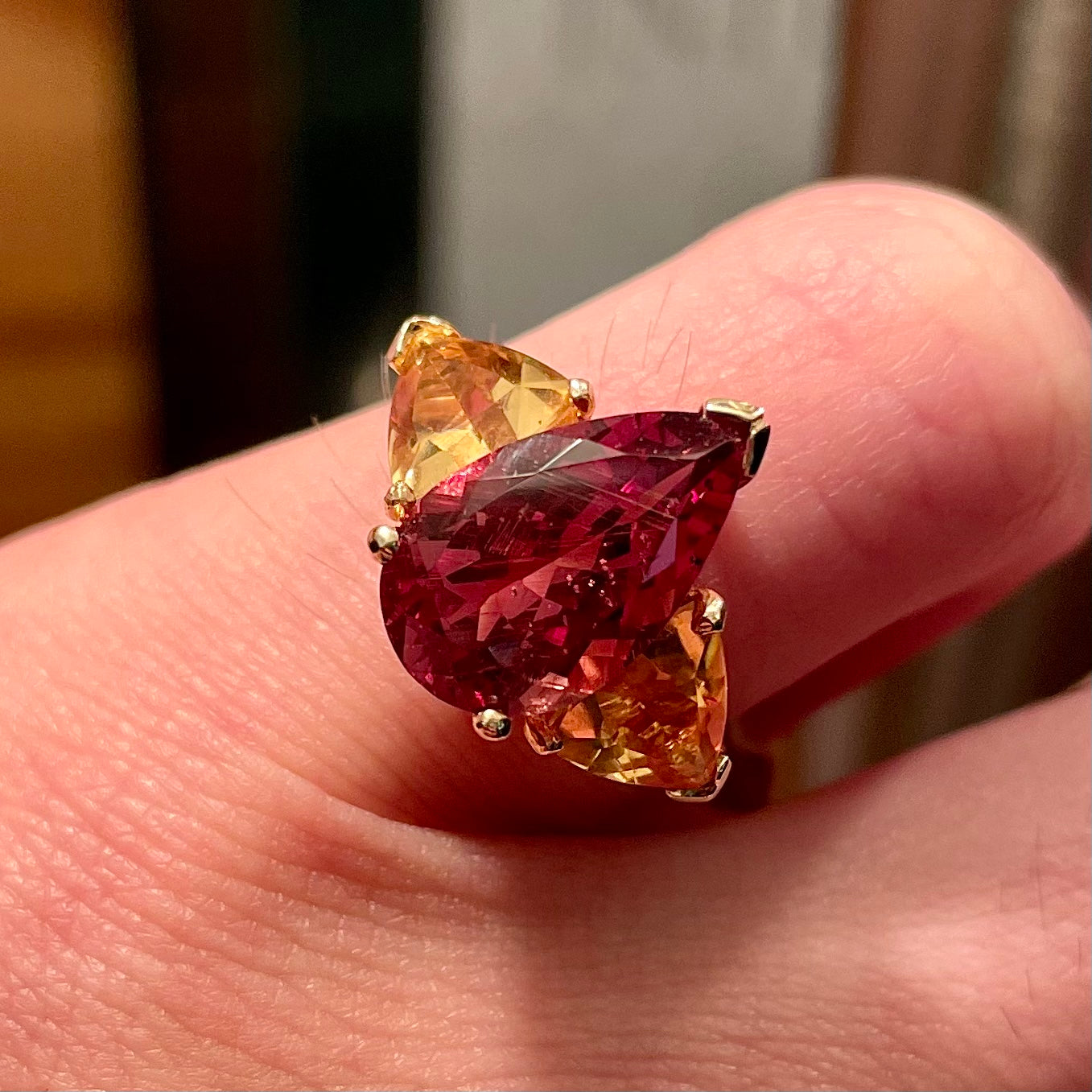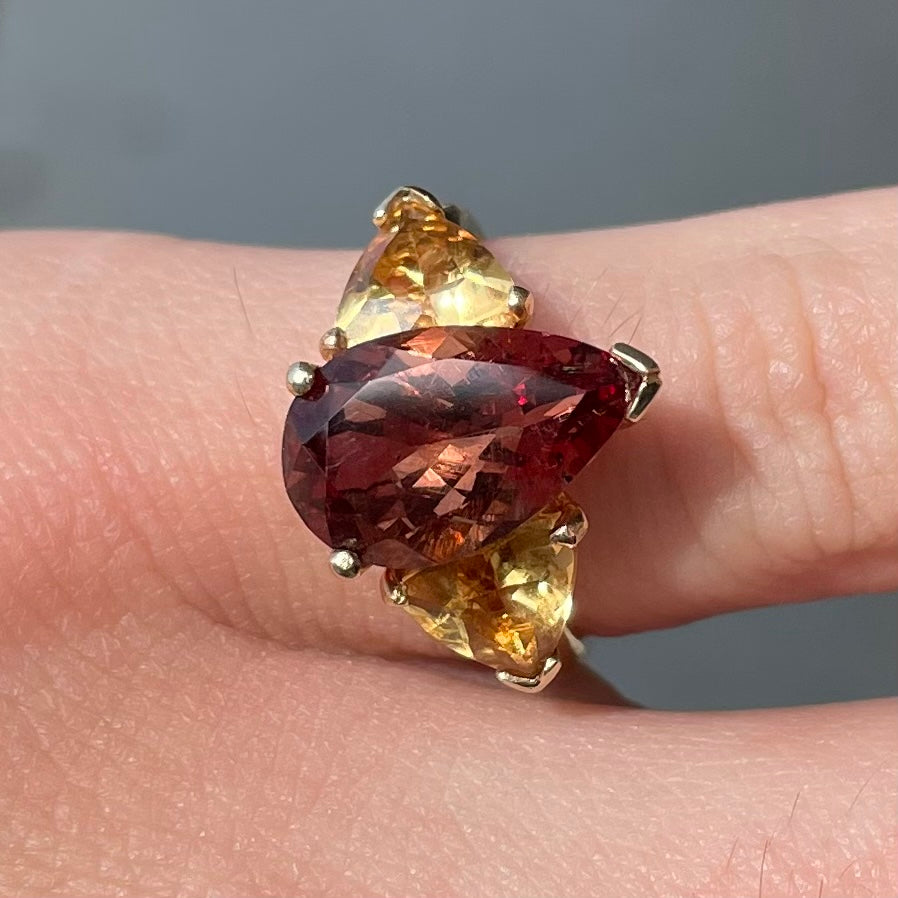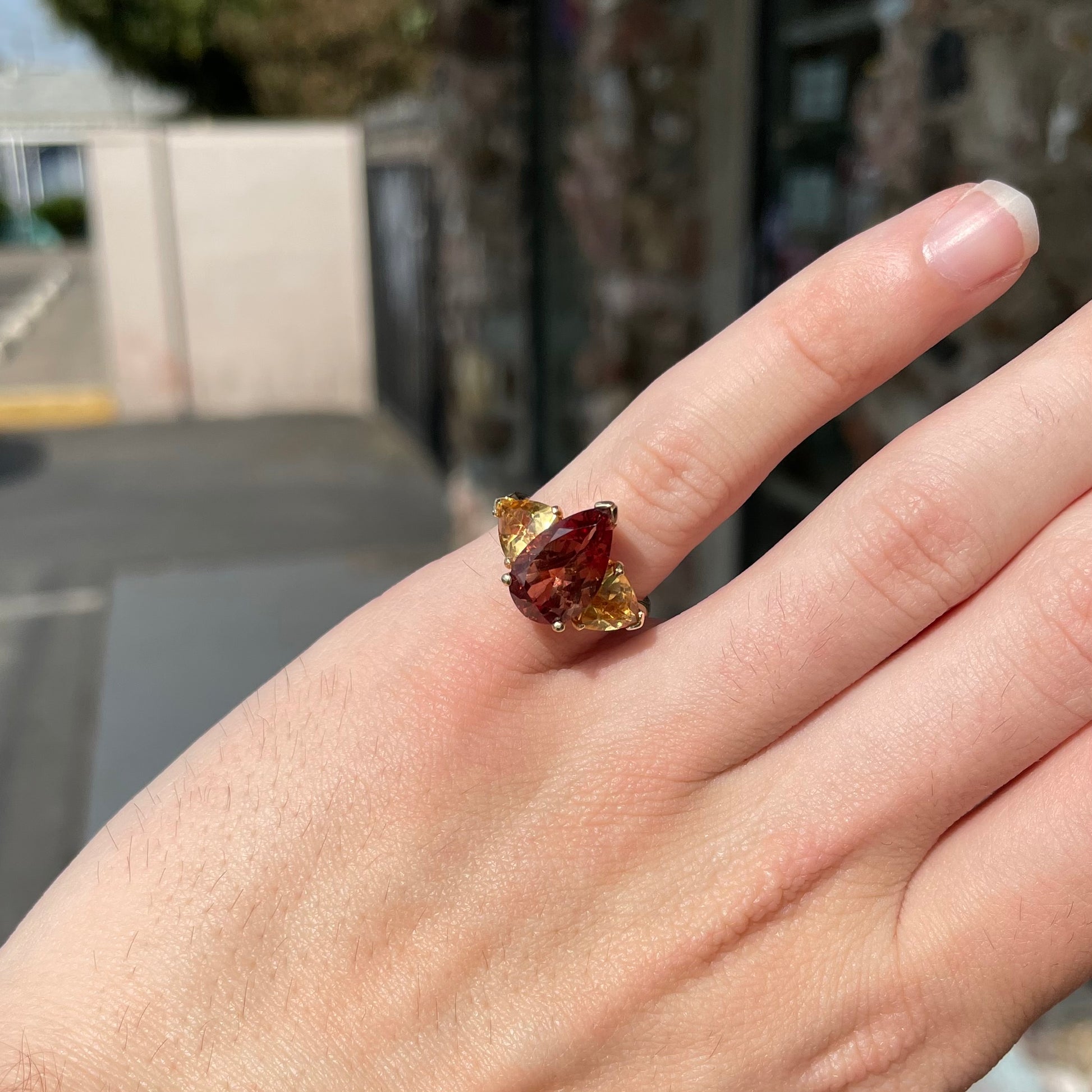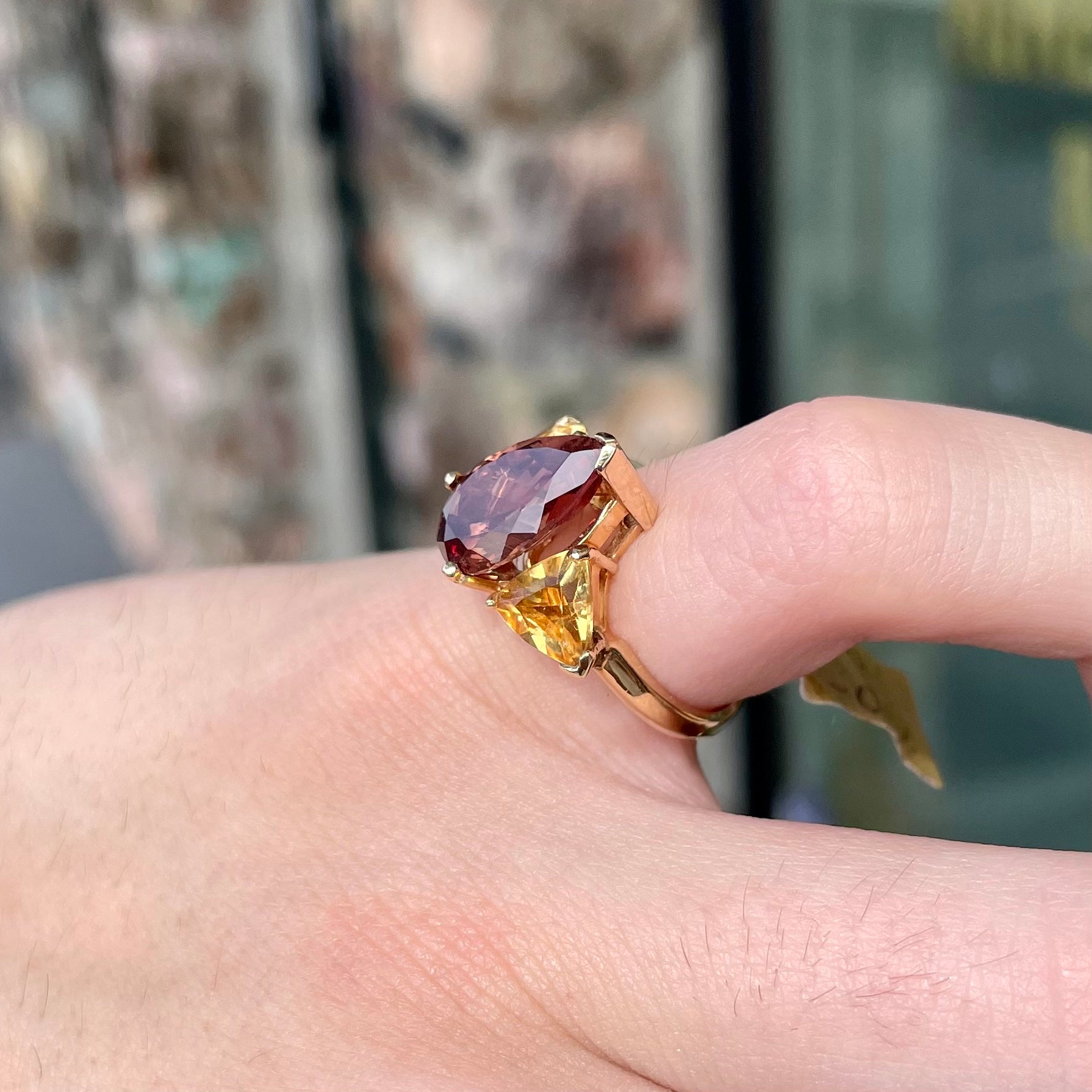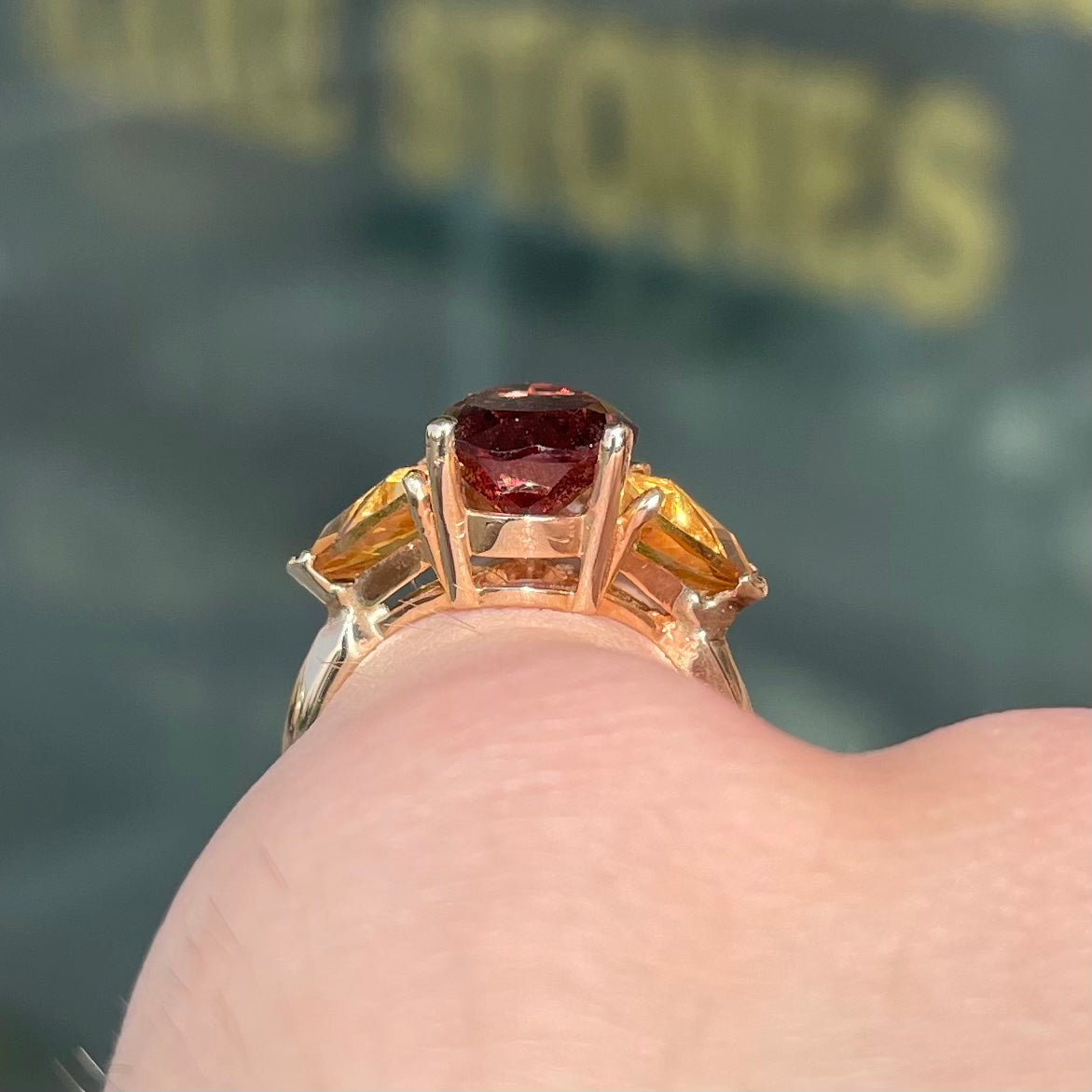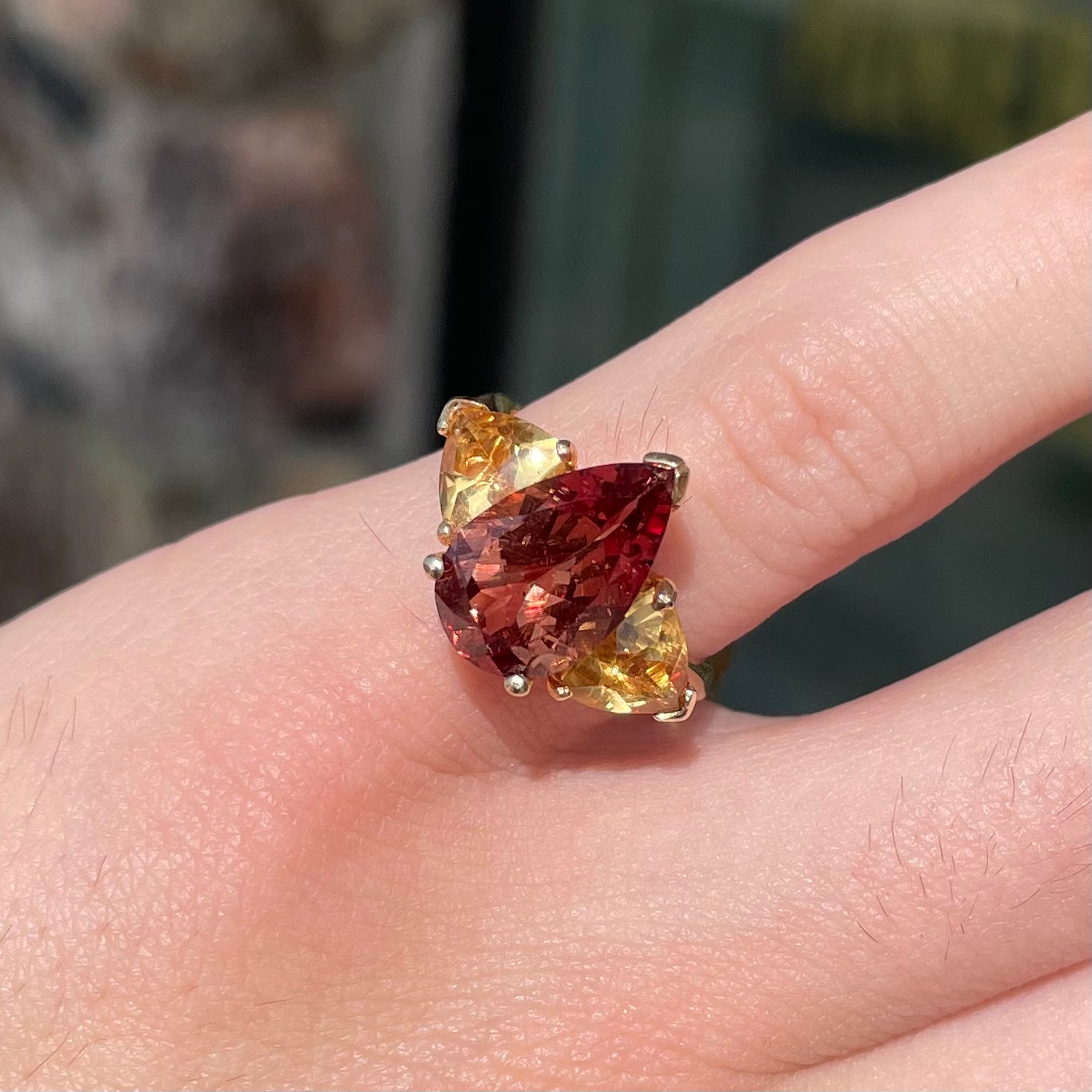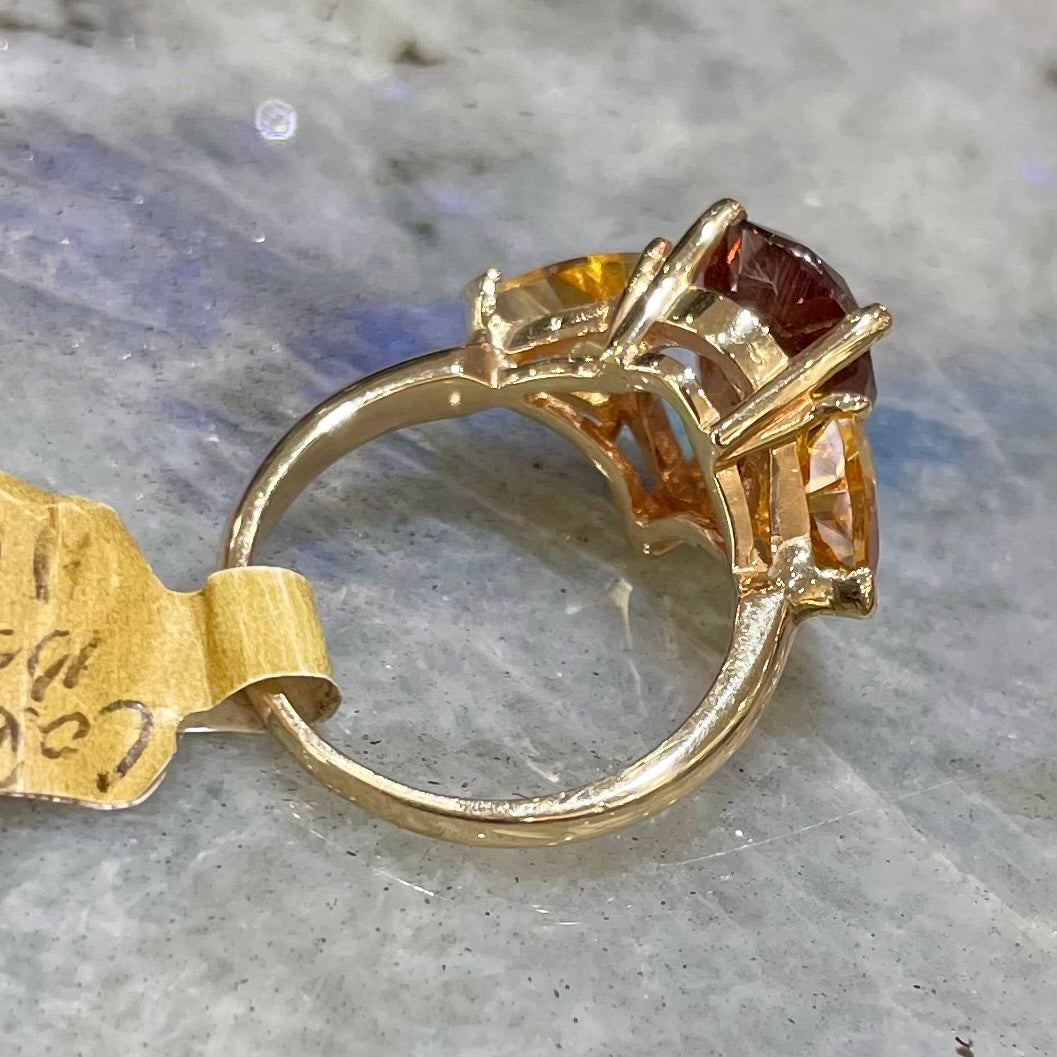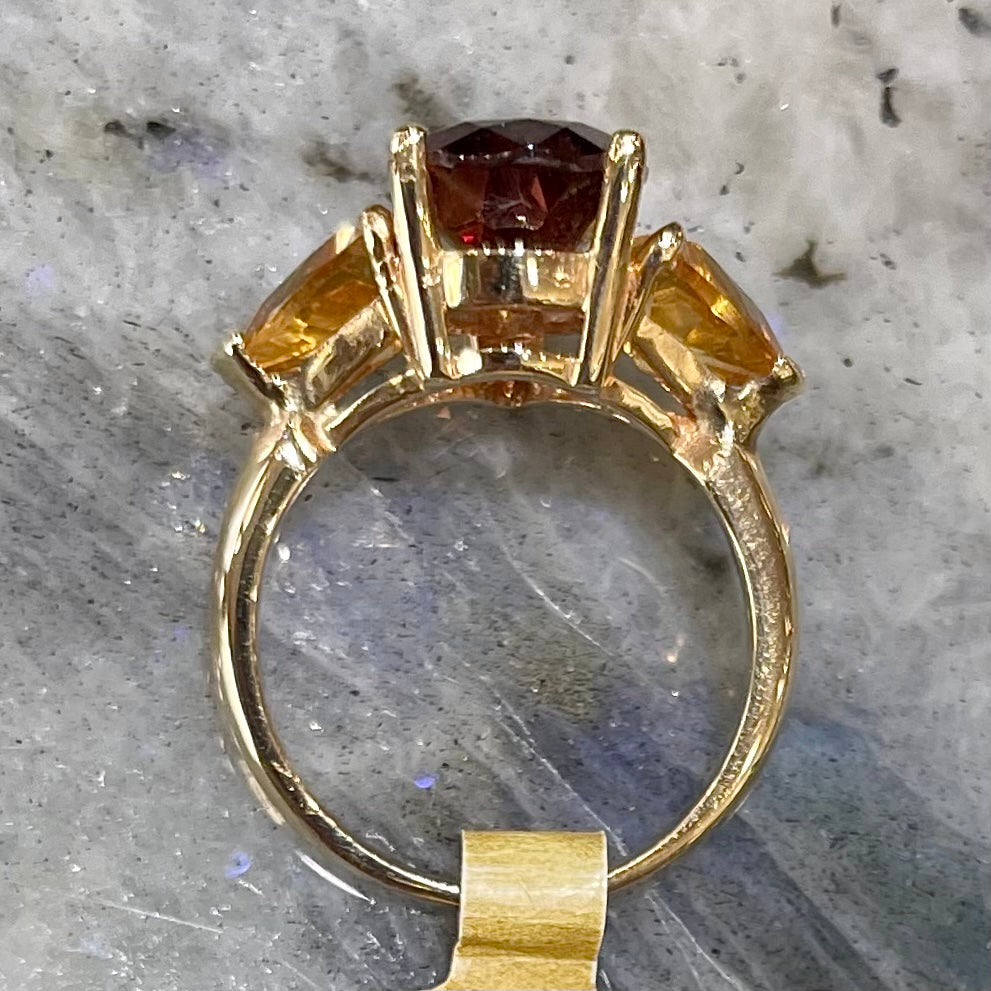Burton's Gems and Opals
Color Change Garnet & Citrine Ring | 14kt
Color Change Garnet & Citrine Ring | 14kt
Couldn't load pickup availability
A Bit About The Piece:
Pear shape color change garnet ring with citrine accent stones.
Details, details...
The Center Stone: Color Change Garnet
- measurements: 13mm x 8mm
- approximately 4.20 carats
- faceted pear shape
- color shifts from brownish red, to taupe, to pinkish red depending on light conditions
The Side Stones: Citrine
- 2 trillion cuts
- stone measurements: 7mm x 7mm each
The Setting: Cast Prong Set Ring
- 14kt yellow gold, solid
- default size: 5.25
About Garnet:
While it might be common belief that all garnet is red, this is nothing more than a misconception. A wide variety of garnet species exist with stones coming in every color, including stones that visibly change color under different lighting conditions. Some species, like the traditional brownish-red "almandine" (which used to be referred to as "almandite), are more common. Others, like the brilliant green "tsavorite" and "demantoid" varieties, are far more rare, commanding higher prices in the trade.
Because the term "garnet" does not refer to one single species of stone, care instructions vary. Green demantoid garnet requires the most care, sitting at 6.5 on the Mohs scale of hardness. Red almandite and pyrope, orange spessartite, and green tsavorite are known to be harder varieties, ranking a durable 7.5 on the hardness scale. While other varieties fall somewhere in between, most are durable enough to wear without any special care or mind. Garnet jewelry can safely be cleaned in chemical jewelry cleaner unless otherwise noted on the label.
About Citrine:
Citrine is a yellow variety of quartz. Often used as an alternate birthstone to topaz for the month of November, shades can vary from a pale yellow to vivid red-orange (referred to as "Madeira citrine"). Some stones can contain varying amounts of purple amethyst, even going as far as creating a vivid natural split of yellow and purple; this is called "ametrine." Natural citrine can be found in Russia and Madagascar, though purple amethyst from Brazil is commonly heat treated to create citrine. This is a widely accepted practice in the gem trade, and it is indistinguishable from non-treated material without an independent lab report.
Because citrine is quartz, material is durable and ranks 7 on the Mohs hardness scale. Citrine makes great rings and is easy to clean with soap and water at home. Chemical jewelry cleaners are safe to use on citrine jewelry.
Wanna closer look?
Share
